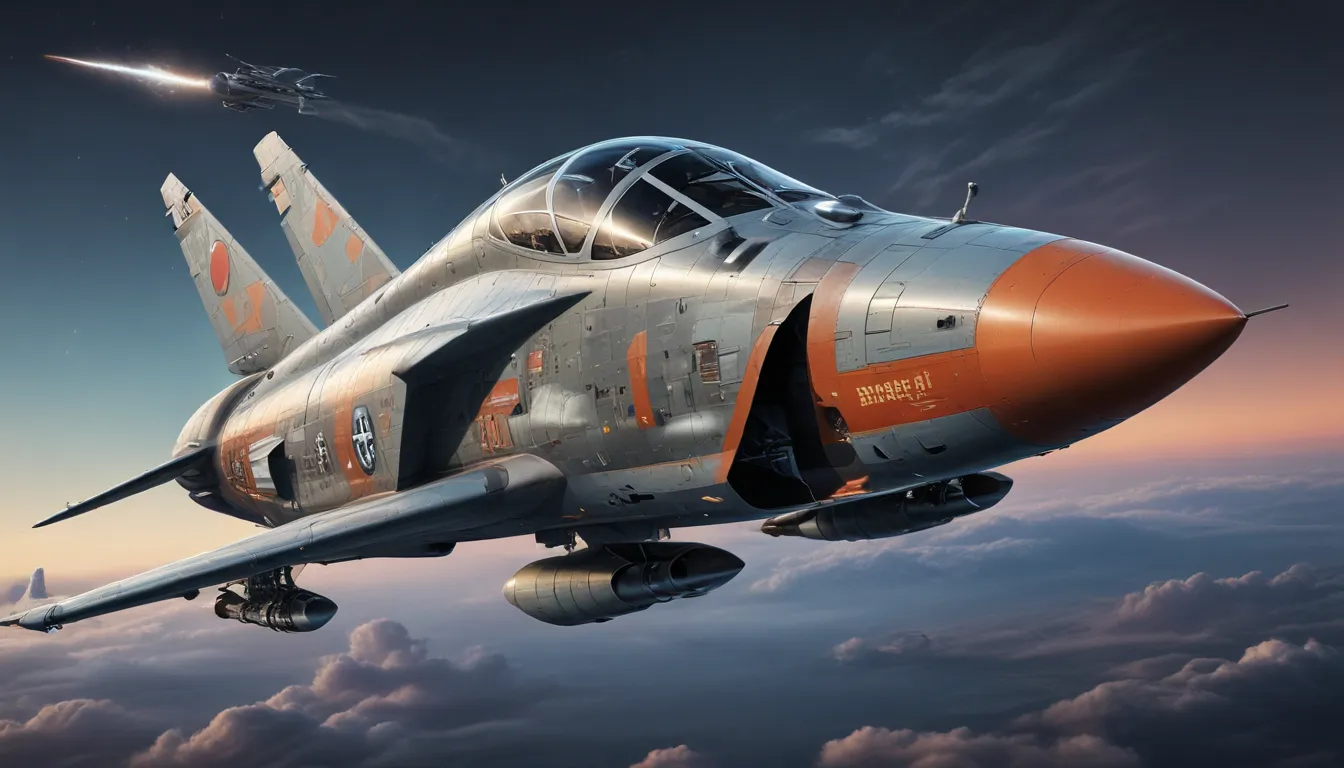A Note About Images: The images used in our articles are for illustration purposes only and may not exactly match the content. They are meant to engage readers, but the text should be relied upon for accurate information.
Aerospace engineering is a captivating realm that marries cutting-edge technology with the wonders of flight and space exploration. Delving into this dynamic industry, we uncover a tapestry of innovation, challenges, and achievements that define the field. Whether you’re an enthusiast, a budding student eager to pursue a career in aerospace engineering, or simply curious about the marvels of aerospace technology, these fun facts will ignite your imagination and deepen your appreciation for the incredible feats accomplished by aerospace engineers. Buckle up as we embark on an exhilarating journey through the captivating realm of aerospace engineering!
Unveiling Key Takeaways:
- The Wright brothers’ pioneering flight in 1903 heralded the dawn of modern aviation and paved the way for aerospace engineering as we know it today.
- The Saturn V rocket’s unparalleled power, the International Space Station’s remarkable speed, and the Concorde’s supersonic travel epitomize the astounding achievements of aerospace engineering.
The Wright Brothers’ Groundbreaking Invention
Wilbur and Orville Wright, fondly known as the Wright brothers, achieved a milestone in aviation history on December 17, 1903. Near Kitty Hawk, North Carolina, they accomplished the first powered, sustained, and controlled airplane flight. This historic event not only marked the birth of modern aviation but also laid the foundation for the revolutionary advancements in aerospace engineering that followed.
The Mighty Saturn V Rocket
Standing tall at over 363 feet and generating a staggering 7.5 million pounds of thrust, the Saturn V rocket remains the most powerful rocket ever constructed. Developed by NASA to support the Apollo and Skylab programs, this marvel of aerospace engineering propelled astronauts to the moon, symbolizing human ingenuity in space exploration.
The Advent of the Term “Aerospace”
The term “aerospace” made its debut in the 1950s during the space age, encapsulating both aeronautics and astronautics. This interdisciplinary field harmonizes atmospheric and space flight, driving innovation and shaping the future of air and space travel with an integrated approach.
Journeying With the International Space Station
A testament to international collaboration and engineering prowess, the International Space Station (ISS) orbits the Earth at a mind-boggling speed of approximately 28,000 kilometers per hour. This velocity facilitates scientific research, technological advancements, and sustains human habitation in outer space, embodying the ingenuity of aerospace engineering.
Stealth Supremacy of the F-22 Raptor
As a fifth-generation fighter aircraft, the F-22 Raptor is renowned for its advanced stealth capabilities, supercruise capability, and unmatched maneuverability. Setting the gold standard for air dominance, this aircraft epitomizes aerospace engineering excellence in modern warfare technology.
The Boeing 747: A Game Changer in Air Travel
Introduced in 1970, the Boeing 747, affectionately known as the “Jumbo Jet,” revolutionized long-haul air travel with its unmatched capacity and range. Its distinctive humpback design and iconic status immortalize its legacy in aerospace history, showcasing a leap forward in commercial aviation.
Supersonic Marvel: The Concorde’s Legacy
The Concorde, the world’s first supersonic passenger airliner, broke barriers with a maximum speed exceeding twice the speed of sound. Representing a groundbreaking advancement in aerospace engineering, the Concorde ushered in a new era of commercial aviation, setting the stage for supersonic travel across the Atlantic.
Enriching Mars Exploration with Rover Missions
Through groundbreaking engineering and scientific exploration, the Mars Rover missions – including Spirit, Opportunity, and Curiosity – have deepened our understanding of the Red Planet’s geology and potential habitability. These missions sow seeds of excitement for future aerospace endeavors, unlocking the mysteries of Mars.
Awe-Inspiring Marvels of the Hubble Space Telescope
Launched into orbit in 1990, the Hubble Space Telescope has unveiled breathtaking images of the cosmos, revolutionizing our comprehension of the universe. By delivering invaluable scientific data, this technological marvel showcases the transformative capabilities of aerospace technology in unraveling the mysteries of space.
Record-Breaking Feat: The Blackbird SR-71
Designed for reconnaissance missions at staggering altitudes and speeds, the Blackbird SR-71 set the record for the fastest air-breathing manned aircraft, achieving speeds surpassing Mach 3. This remarkable engineering triumph underscores the extraordinary achievements in aerospace history.
V-2 Rocket: Pioneering Space Exploration
During World War II, Germany developed the V-2 rocket, marking the first human-made object to breach the fringes of space in 1944. This groundbreaking achievement laid the foundation for future space exploration endeavors and propelled advancements in aerospace technology.
Visionary Concept: The Space Elevator
Proposing a tether connecting Earth to space, the space elevator concept envisions a revolutionary method for transporting materials and personnel to space. This innovative idea in aerospace engineering presents a futuristic approach to space travel and exploration, pushing the boundaries of human ingenuity.
Hypersonic Marvel: The X-15 Aircraft
With a top speed reaching Mach 6.72, or nearly 7,200 kilometers per hour, the X-15 aircraft holds the record for the fastest speed ever recorded by a manned aircraft. Through its experimental flights, this hypersonic rocket-powered aircraft showcases the incredible capabilities of aerospace engineering in achieving unprecedented velocities.
Lunar Triumph: The Apollo 11 Mission
In July 1969, the Apollo 11 mission achieved a historic milestone as astronauts Neil Armstrong and Buzz Aldrin stepped foot on the lunar surface. This monumental triumph in aerospace engineering and space exploration marked the first human landing on the moon, forever etching its place in history.
Carbon Fiber Composites: Pioneering Materials in Aerospace Engineering
The development of carbon fiber composites has revolutionized aerospace materials, offering exceptional strength-to-weight ratios for lightweight yet durable aircraft and spacecraft construction. This innovation propels advancements in efficiency and performance, underscoring the transformative impact of aerospace engineering on material science.
Hypersonic Flight: Pushing the Boundaries of Speed
Defined by velocities exceeding Mach 5, hypersonic flight poses engineering challenges and promises breakthroughs in aerospace technology. This domain of rapid global travel and enhanced space exploration capabilities opens new frontiers in aerospace engineering, fueling aspirations for high-speed advancements.
Voyager Probes: Venturing Into the Unknown
Launched in 1977, the Voyager 1 and Voyager 2 probes have transcended our solar system, delving into interstellar space and collecting invaluable data about the outer planets and beyond. These enduring missions highlight the legacy of aerospace engineering in scientific exploration and discovery.
3D Printing: Transforming Aerospace Manufacturing
By enabling rapid prototyping, intricate component production, and lightweight structural designs, 3D printing has revolutionized aerospace manufacturing processes. This cutting-edge technology offers unparalleled flexibility and innovation in creating advanced aerospace components and systems, ushering in a new era of manufacturing efficiency.
Conclusion: Celebrating the Boundless Spirit of Aerospace Engineering
Aerospace engineering stands as a testament to human ingenuity and a beacon of progress, pushing the boundaries of human innovation with each milestone achieved. From the depths of Earth’s atmosphere to the vast expanse of outer space, aerospace engineering captivates us with its transformative power and unwavering ambition. As we navigate through the captivating world of aerospace engineering, we uncover a realm of endless possibilities and remarkable achievements that inspire us to reach for the stars.
FAQs: Delving Deeper Into Aerospace Engineering
What Contributions has Aerospace Engineering made to Society?
Aerospace engineering has significantly impacted society by shaping commercial aircraft, space exploration missions, satellite communication systems, and advancements in military aviation technology. These contributions not only enhance global connectivity and transportation but also expand our understanding of the universe, enriching our lives with technological marvels.
How does Aerospace Engineering Influence Everyday Life?
Aerospace engineering influences everyday life in myriad ways, from facilitating efficient air travel and satellite-based communication to improving weather forecasting and supporting scientific research. Additionally, aerospace technology contributes to advancements in medical imaging, environmental monitoring, and disaster management, showcasing its pervasive impact on modern society.
Embracing the Journey Together
At the core of our mission lies a commitment to delivering engaging and trustworthy content rooted in authenticity. Each fact shared on our platform is contributed by individuals like you, embodying a wealth of diverse insights and knowledge. Our dedicated editors rigorously review each submission to uphold the highest standards of accuracy and reliability. Trust in our dedication to quality and authenticity as we embark on a collective journey of exploration and discovery.
Conclusively, aerospace engineering encapsulates a world of innovation, ingenuity, and limitless aspirations that propel humanity to new heights of achievement. As we navigate through the vast expanse of aerospace technology, let us embrace the wonders that await us and celebrate the boundless spirit of human exploration. Discover, learn, and inspire as we soar to new horizons together in the captivating realm of aerospace engineering.





